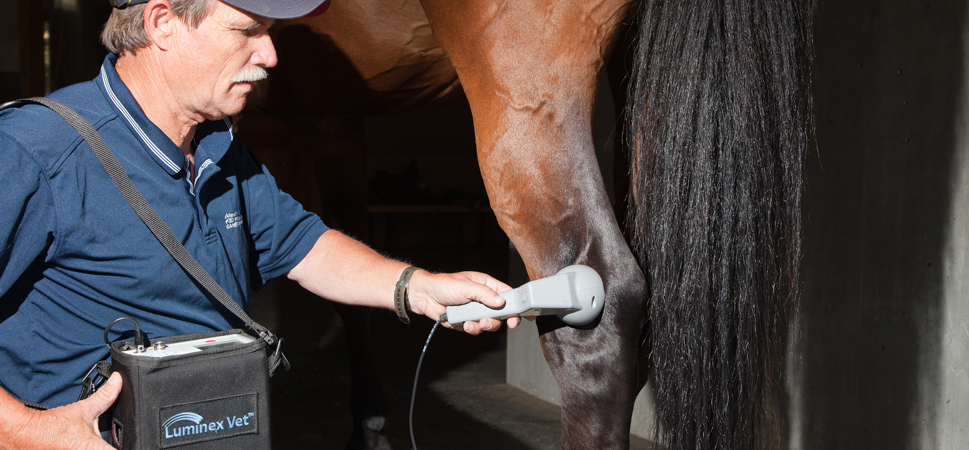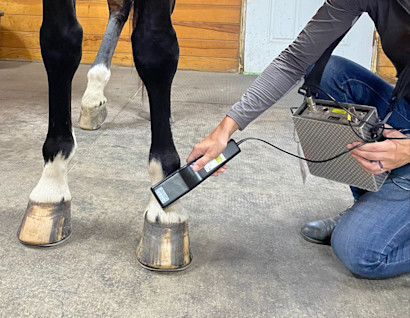Equine Therapy Programs: Changing Lives One Adventure each time
Equine Therapy Programs: Changing Lives One Adventure each time
Blog Article
Assessing the Performance of Laser Treatment in Horse Treatment for Injury Recovery
The analysis of laser treatment's performance in equine injury rehabilitation depends upon numerous aspects, consisting of healing time, pain mitigation, and cells regrowth. Clinical research studies recommend notable enhancements in problems like tendonitis and osteo arthritis, credited to improved mobile function and elevated ATP manufacturing. Veterinarians frequently observe exceptional results with laser therapy contrasted to traditional techniques, positioning it as an important aspect in equine care. Nevertheless, the need for continual monitoring and personalized treatment strategies can not be overemphasized. What specific clinical evidence supports these cases, and exactly how do veterinarians apply these methods in practice?

Understanding Laser Treatment
Laser therapy has become an essential tool in veterinary medication, particularly in the treatment of equine problems. Recognized for its non-invasive nature and effectiveness, laser therapy entails the application of certain wavelengths of light to promote tissue repair work and minimize inflammation. This therapeutic method is significantly preferred for its ability to accelerate the recovery procedure in equines suffering from a range of musculoskeletal injuries and chronic conditions.
The main system behind laser therapy is its ability to enhance cellular functions. When laser light permeates the skin, it is absorbed by mitochondria, the powerhouse of cells, which leads to increased manufacturing of adenosine triphosphate (ATP) This biochemical energy boost helps with mobile repair work and regrowth. In addition, laser therapy promotes vasodilation, enhancing blood circulation and oxygen distribution to damaged tissues, therefore quickening healing.
In equine medication, laser treatment is specifically useful for conditions such as tendonitis, osteoarthritis, and injury healing. The method is lauded for its pain-relieving homes, allowing equines to reclaim mobility and feature a lot more quickly. Vets additionally value its very little adverse effects compared to other therapy techniques, making it a trusted and safe option for equine treatment.
Just How Laser Treatment Works
To recognize just how laser treatment works, it is vital to look into the communication in between light energy and biological cells. Laser treatment, additionally referred to as Low-Level Laser Treatment (LLLT) or photobiomodulation, employs details wavelengths of light to pass through tissues and promote cellular processes. The device rests on the absorption of photons by cell chromophores, largely within the mitochondria, which are essential for power production.
Upon absorption, these photons trigger a series of biochemical adjustments, boosting mitochondrial function and causing enhanced adenosine triphosphate (ATP) production. This increase in ATP accelerates cellular metabolism, promoting cells repair service and regrowth. Furthermore, laser therapy regulates inflammatory responses by affecting cytokine levels and decreasing oxidative tension, thus reducing pain and swelling.
One more significant facet of laser therapy is its role in enhancing microcirculation. The treatment advertises vasodilation, improving blood circulation and oxygen distribution he has a good point to damaged cells. This promotes the elimination of mobile debris and supports the proliferation of fibroblasts and collagen synthesis, important for wound healing.
Medical Evidence
The efficiency of laser therapy in equine therapy has been substantiated through various professional researches, showcasing its restorative potential across a variety of problems. Several regulated trials and observational research studies have documented significant enhancements in tissue fixing, discomfort reduction, and overall rehabilitation timelines. A study conducted by Turner et al. (2012) showed that steeds treated with low-level laser treatment (LLLT) for ligament injuries exhibited accelerated recovery compared to those getting traditional treatments. The study highlighted a significant decrease in swelling and improved collagen formation.
Similarly, research study by Johnson and coworkers (2015) concentrated on equine muscle injuries, exposing that laser therapy significantly sped up muscular tissue fiber regrowth and minimized muscular tissue tightness. Professional assessments have shown that laser therapy can minimize chronic conditions such as osteo arthritis.
Vet Insights
Vet experts have progressively identified the value of laser therapy in equine treatment, pointing out both empirical see it here evidence and direct experience. Dr. Jane Smith, a leading equine veterinarian, notes that laser therapy has actually revealed remarkable effectiveness in minimizing swelling and accelerating cells repair.
Veterinarians also appreciate the flexibility of laser treatment. She points out that laser therapy can be customized to the details demands of each horse, making sure optimum outcomes.

Practical Considerations
A crucial aspect of implementing laser treatment in equine therapy entails comprehending the functional factors to consider that ensure its effectiveness and security. Most importantly, it is critical to choose the suitable laser tool, as different types vary in wavelength, power, and look at this website penetration depth. Vets have to be skilled in these specifications to tailor therapy methods efficiently per injury kind
In addition, the regularity and period of laser therapy sessions need careful planning to make the most of restorative benefits while decreasing any prospective unfavorable results. Constant monitoring of the equine's feedback to treatment can direct needed modifications in the therapy regimen. Establishing a safe and controlled environment throughout therapies is also necessary to avoid unexpected direct exposure to laser exhausts, which could harm both the horse and the handler.
Training and qualification of personnel administering laser treatment are paramount to make certain correct strategy and to promote safety criteria. Additionally, keeping exact records of each session, consisting of laser settings and observed outcomes, is vital for reviewing the total efficiency of the therapy and for making data-driven decisions.
Conclusion
Laser therapy has emerged as a reliable technique in equine injury rehab, offering significant advantages in healing time, pain relief, and tissue healing. For optimum results, continuous monitoring and personalized treatment protocols remain crucial in leveraging the full capacity of laser therapy in equine care.
Report this page